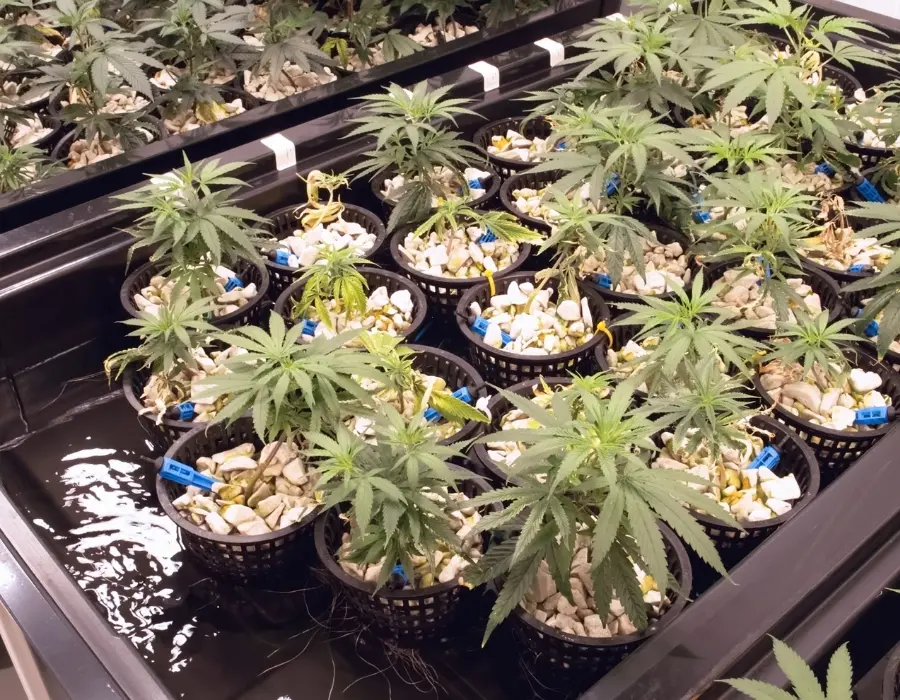If you’re a cannabis grower or would-be cannabis grower, you will probably have heard of hydroponics. Hydroponic gardening simply refers to the process of growing plants without soil.
While this may seem counterintuitive, the flexibility, effectiveness and DIY-nature of hydroponic growing make the method a staple in the cannabis cultivation community, particularly favoured amongst those growing an indoor garden for its ability to provide year-round harvests.
What is Hydroponics?
Hydroponic growing is quite simply the growth of plants without soil. Typically, plants receive nutrients from the soil in which they grow. Hydroponics takes the soil out of the equation and instead uses a solution of nutrient-rich water to provide plants with proper nutrition.
Because the grower has control over nearly every factor of a hydroponic garden, it makes it the perfect choice for cannabis growers who are limited by lack of space or land. Instead of a giant hole full of soil, or a massive pot of potting mix, hydroponic gardeners suspend their plants’ roots in a soilless or inert medium, or sometimes right in the nutrient solution itself. This simple concept can be expanded to fit as large or small of a growing space as necessary, making it a perfect choice for indoor and home growers.
Advantages of Hydroponics
There are many advantages to using hydroponics to grow your cannabis:
- Plants grow faster in hydroponics systems.
- Plants tend to produce a more significant crop in hydroponics systems.
- The gardener has total control of all aspects of the grow, amongst others.
Because nutrients are provided to plants’ roots through a mineral nutrient solution, the plant expends significantly less energy than it does seeking out nutrients from the soil. Instead of sending roots further out into the growing medium to round up their food, the root system is soaked in the solution of readily-available, suspended nutrients.
Additionally, growers use supplements such as mycorrhizal fungi and humic acid to increase nutrient uptake in plants. Supplementing plants in this manner allows them to focus more energy on growth and less on survival, generating larger plants in a shorter amount of time, with some growers reporting between 20-50% faster growth.
In addition to faster growth, growers can also expect more significant yields come harvest time. Hydroponic grows tend to produce denser, heavier and more potent buds, with some reporting yields up to 25% higher than traditional soil-grown cannabis.
Besides growing bigger and more robust plants, many growers prefer hydro growing over soil due to the simple fact that they have total control over their plant’s growing environment. Because the grower mixes and balances the reservoir of nutrient solution, they ultimately have the final say in what nutrients the plant will receive and in what concentrations. While most growers will appeal to the feeding chart from the nutrient line they choose to incorporate, the decision still ultimately rests with the grower, leaving them fully in charge of their plants.
The world of hydroponics can be a bit overwhelming because of the many different orientations and styles of grow systems that exist. Perhaps the first step to a successful hydroponics system is choosing the growing medium that is best suited for your needs.
